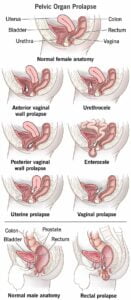Diagnosing ALS
Diagnosing Amyotrophic Lateral Sclerosis (ALS) can be challenging due to its symptom overlap with other conditions. To confirm ALS or exclude other diseases, the following tests are typically conducted:
- Electromyogram (EMG): This test involves inserting a needle into muscles to record their electrical activity during contraction and rest, helping identify muscle or nerve issues.
- Nerve Conduction Study: Measures the ability of nerves to send signals to muscles, determining the presence of nerve damage. EMG and nerve conduction studies are often performed together.
- MRI: Magnetic resonance imaging uses radio waves and a magnetic field to create detailed images of the brain and spinal cord, potentially identifying conditions like spinal cord tumors or herniated disks.
- Blood and Urine Tests: Laboratory analysis of blood and urine can help rule out other causes. High serum neurofilament light levels in blood samples are common in ALS patients, aiding early diagnosis.
- Spinal Tap (Lumbar Puncture): A sample of spinal fluid is extracted for testing, which typically appears normal in ALS but may reveal other issues.
- Muscle Biopsy: If muscle disease is suspected, a small muscle sample is taken for lab analysis under local anesthesia.
- Nerve Biopsy: Similarly, if a nerve disease is suspected, a nerve sample is analyzed.
Treatment Approaches
While there is no cure to reverse ALS damage, treatments aim to slow symptom progression and enhance comfort and independence.
- Multidisciplinary Care: A team of specialists collaborates to extend survival and improve life quality, with personalized treatment plans.
- Medications Approved by the FDA:
- Riluzole (Rilutek, Exservan, Tiglutik): This oral medication may extend life expectancy by approximately 25%, with side effects monitored through liver function tests.
- Edaravone (Radicava): Administered intravenously or orally, it may slow functional decline, though its impact on lifespan is uncertain. Side effects include bruising, headaches, and gait issues.
Additional treatments may be prescribed to alleviate symptoms such as muscle cramps, constipation, fatigue, excessive saliva, pain, depression, sleep disturbances, emotional outbursts, urinary urgency, and leg swelling.
Therapeutic Interventions for ALS
Therapies play a crucial role in managing ALS, particularly as it impairs breathing, speech, and movement capabilities.
Respiratory Support As ALS progresses, respiratory muscles weaken, necessitating regular breathing assessments and mechanical ventilation assistance, especially at night. Noninvasive ventilation via a mask is a common choice, while some may undergo a tracheostomy, where a tube connected to a respirator aids breathing through a surgically created neck opening. In certain cases, a laryngectomy is performed to prevent food aspiration.
Physical Therapy Physical therapists provide pain management, mobility support, and assistive device guidance to foster independence. Engaging in low-impact exercises and stretching can enhance cardiovascular health, muscle strength, and flexibility, contributing to overall well-being.
Occupational Therapy Occupational therapists offer strategies to maintain independence despite hand and arm weakness, recommending adaptive equipment for daily tasks and home modifications for safer mobility.
Speech Therapy Speech therapists provide techniques to improve speech clarity and alternative communication methods, such as apps, alphabet boards, or writing tools. They may also suggest recording one’s voice for text-to-speech applications.
Nutritional Support A care team ensures patients consume foods that are easy to swallow and nutritionally adequate, often resorting to feeding tubes when necessary.
Psychological and Social Support Social workers address financial, insurance, and equipment needs, while psychologists and other professionals offer emotional support to patients and their families.
Exploring Future Treatments Researchers continue to investigate potential treatments and medications, conducting clinical trials based on the evolving understanding of ALS.
Navigating ALS: Support and Management
Emotional Well-being Upon an ALS diagnosis, it’s natural to experience a profound sense of loss. Allowing yourself and your family time to grieve is essential. Despite the challenges, fostering hope and focusing on abilities rather than limitations can significantly enhance life quality. Remember, ALS is a part of life, not the entirety of one’s identity.
Community Support Finding solace in support groups with fellow ALS patients or caregivers can be comforting. These groups provide a platform for sharing experiences and coping strategies.
Future Care Planning Early decision-making regarding medical care and end-of-life preferences empowers you and eases the burden on loved ones. Consider all care options, including hospice, and engage with healthcare professionals to outline your wishes.
Research Participation Engaging in ALS research by joining clinical trials or registries contributes to the collective effort to understand and eventually cure ALS.
Appointment Preparation Navigating the diagnostic process involves multiple steps:
- Symptom Tracking: Maintain a detailed record of symptoms, noting occurrences and severity, to aid in accurate diagnosis.
- Care Team Coordination: Establish a care team led by a neurologist specializing in ALS to ensure comprehensive care tailored to your needs.
Consultation Expectations During consultations, expect thorough reviews of medical history and symptom assessments, including evaluations of:
- Reflexes
- Muscle strength and tone
- Sensory functions
- Coordination and balance
These measures help in forming a complete picture of the condition and guide subsequent care decisions.


